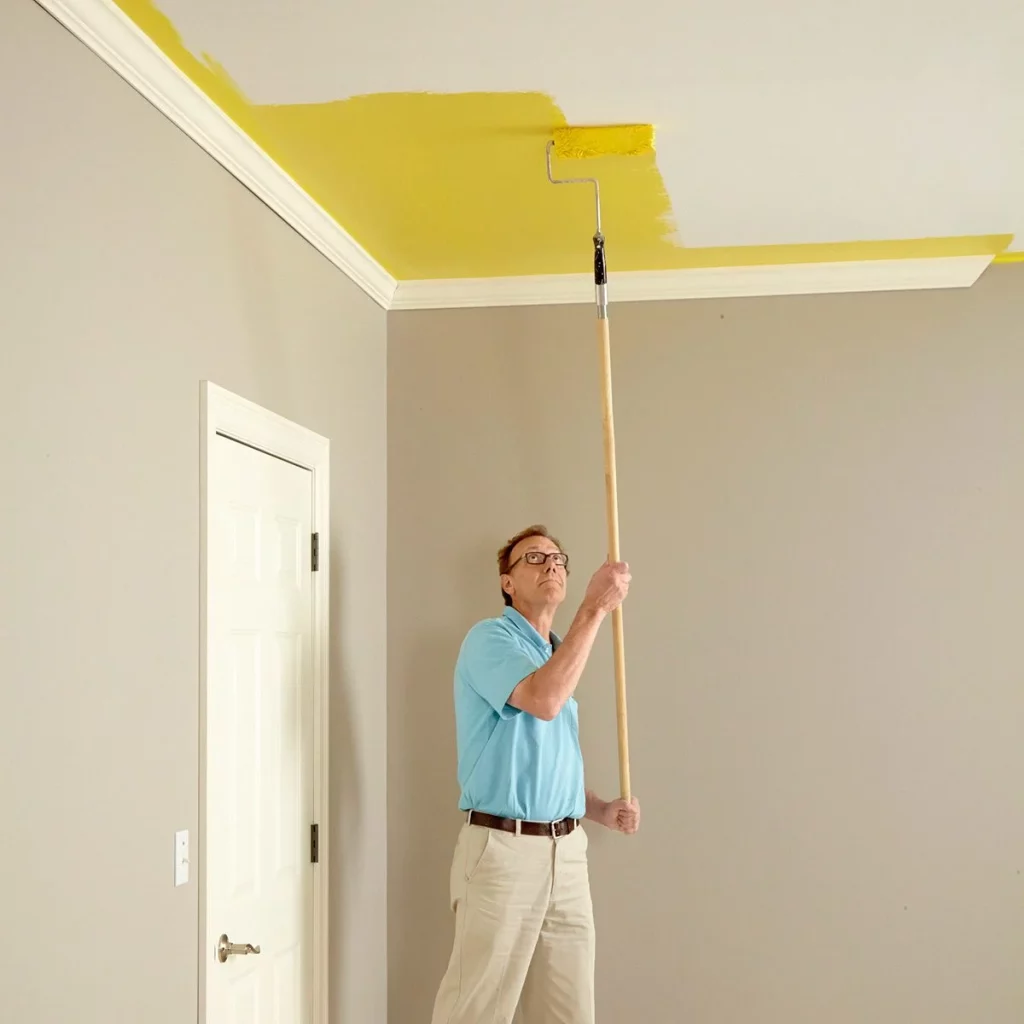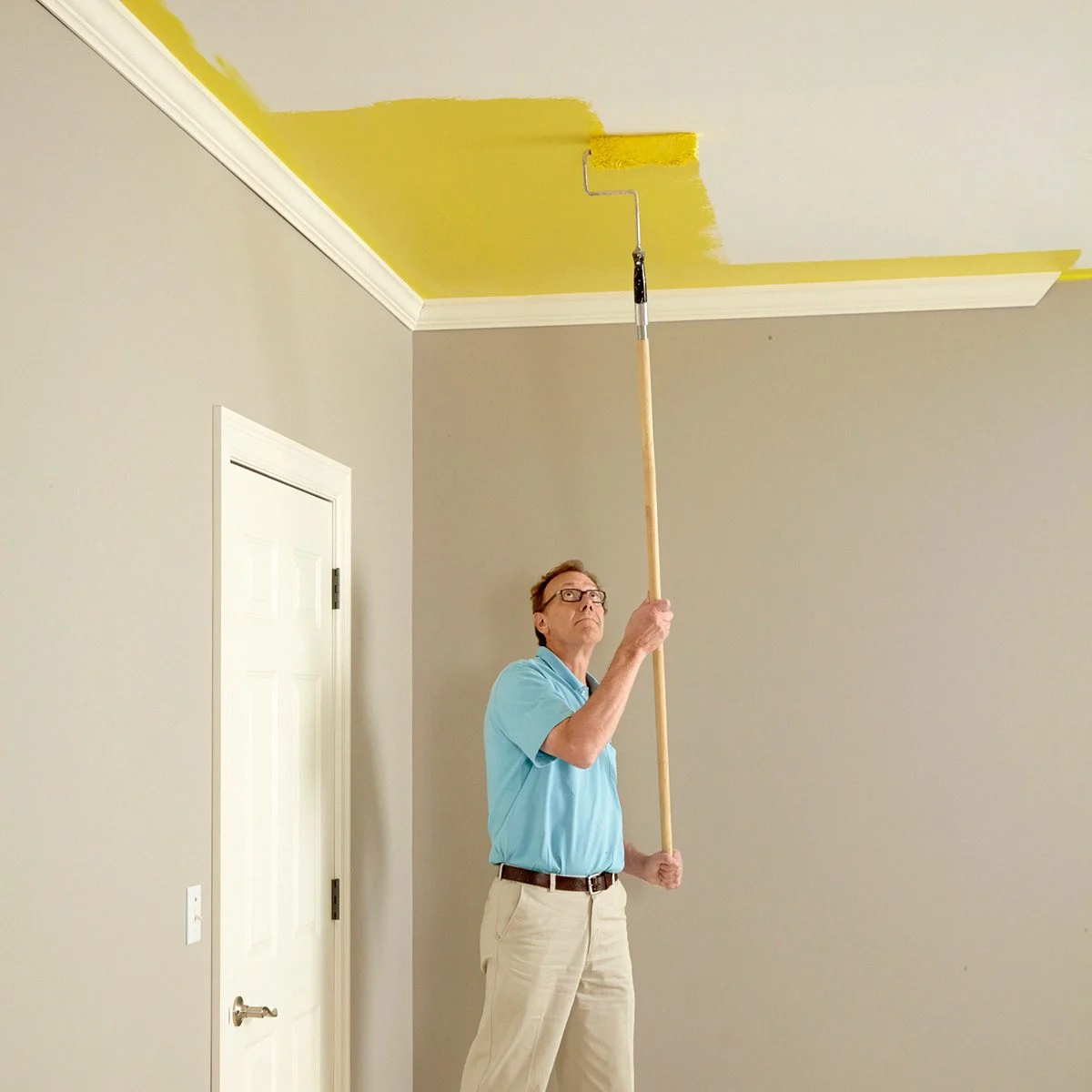Painting a ceiling can be a challenging task that requires skill and patience. Whether you’re a professional painter or a homeowner looking to tackle a DIY project, one of the most important questions you’ll face is, “How much should I charge to paint a ceiling?” In this article, we’ll explore the factors that influence the cost of ceiling painting and provide guidance on how to determine a fair price for your services.

Factors Affecting Ceiling Painting Costs
Understanding the Variables
The cost of painting a ceiling can vary significantly based on several factors. It’s essential to consider these variables when determining how much to charge for your painting services:
1. Ceiling Size and Height
The size of the ceiling is a fundamental factor in pricing. Larger ceilings will require more paint and time to complete. Additionally, if the ceiling is unusually high, it may necessitate specialized equipment or scaffolding, which can increase the cost.
The condition of the ceiling plays a crucial role in pricing. A ceiling with extensive cracks, stains, or peeling paint may require additional preparation work, such as patching and priming. This will add to the overall cost.
3. Ceiling Material
The material of the ceiling can impact the cost. Painting a smooth, flat drywall ceiling is generally less labor-intensive than painting a textured or popcorn ceiling, which may require more attention to detail.
4. Ceiling Height and Design
Ceilings with intricate designs or architectural features, such as coffers or tray ceilings, may require more time and skill to paint. These factors can influence the pricing significantly.
5. Paint Type and Quality
The type and quality of paint chosen will affect the overall cost. High-quality paint brands often come at a higher price, but they can provide better coverage and durability, resulting in a longer-lasting finish.
6. Labor and Professional Expertise
If you’re a professional painter, your hourly rate or flat fee for labor will contribute to the overall cost. Homeowners tackling a DIY project should consider the value of their time and effort when determining the cost.
Calculating the Cost
Steps to Determine Your Rate
To determine how much you should charge to paint a ceiling, follow these steps:
1. Measure the Ceiling
Begin by measuring the size of the ceiling in square feet. Multiply the length by the width to calculate the square footage.
2. Assess the Ceiling Condition
Evaluate the ceiling’s condition and any necessary repairs or preparation work. Factor in the time and materials needed for these tasks.
3. Consider Labor
Determine your hourly rate or the amount you want to charge for your labor. Be sure to account for the time required to paint the ceiling, including setup and cleanup.
4. Estimate Paint Costs
Calculate the cost of paint based on the type and quantity needed. Don’t forget to include primer if necessary.
5. Account for Additional Costs
Consider any additional expenses, such as equipment rental, drop cloths, painter’s tape, and brushes or rollers.
6. Add a Profit Margin
To ensure you’re compensated fairly for your skills and expertise, add a profit margin to your calculations.
7. Provide a Detailed Quote
Present your potential clients with a detailed quote that outlines all the costs involved in painting their ceiling. This transparency builds trust and helps clients understand the value of your services.
Conclusion
Determining how much to charge to paint a ceiling involves a careful assessment of various factors, including ceiling size, condition, and materials, as well as labor and paint costs. By following a structured approach to pricing and providing clear, detailed quotes, you can offer fair and competitive pricing for your ceiling painting services. Remember that delivering high-quality work and excellent customer service will contribute to your reputation and success in the painting industry.
